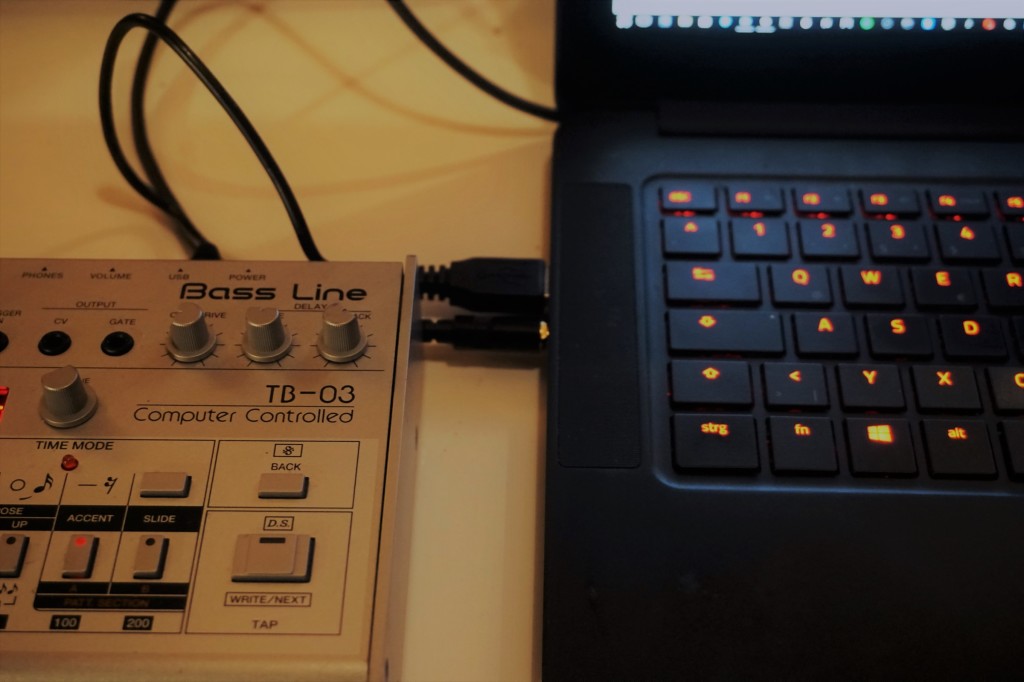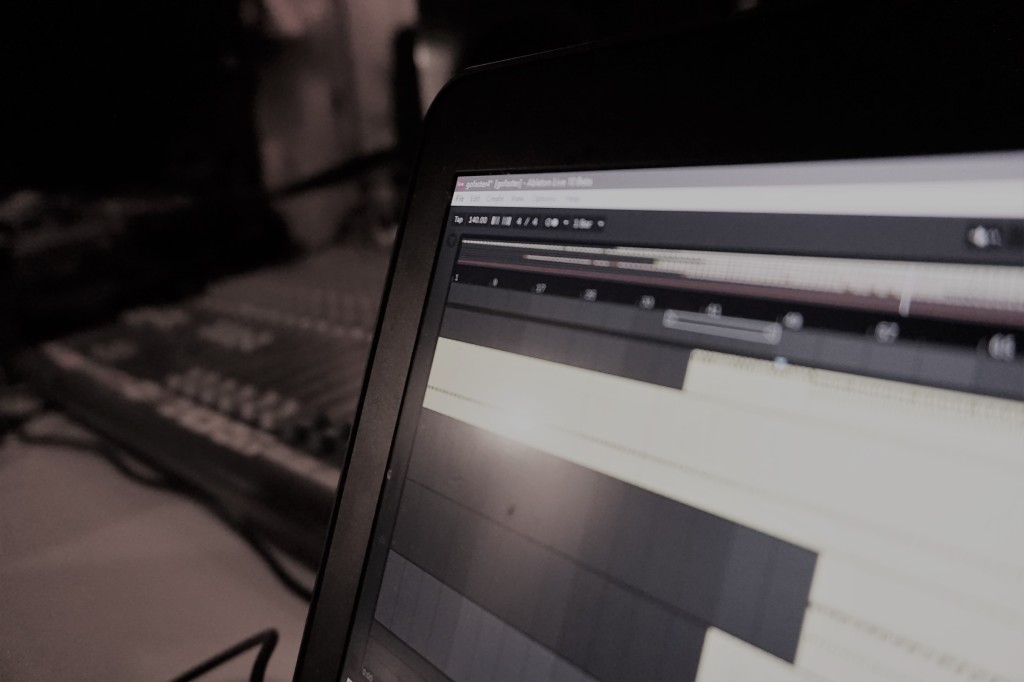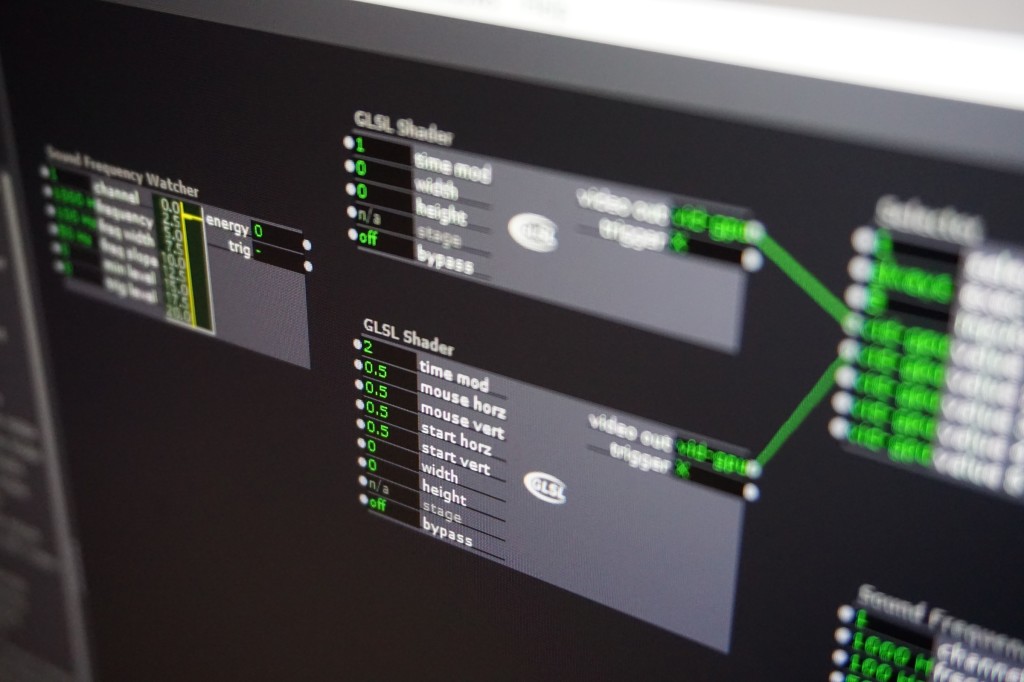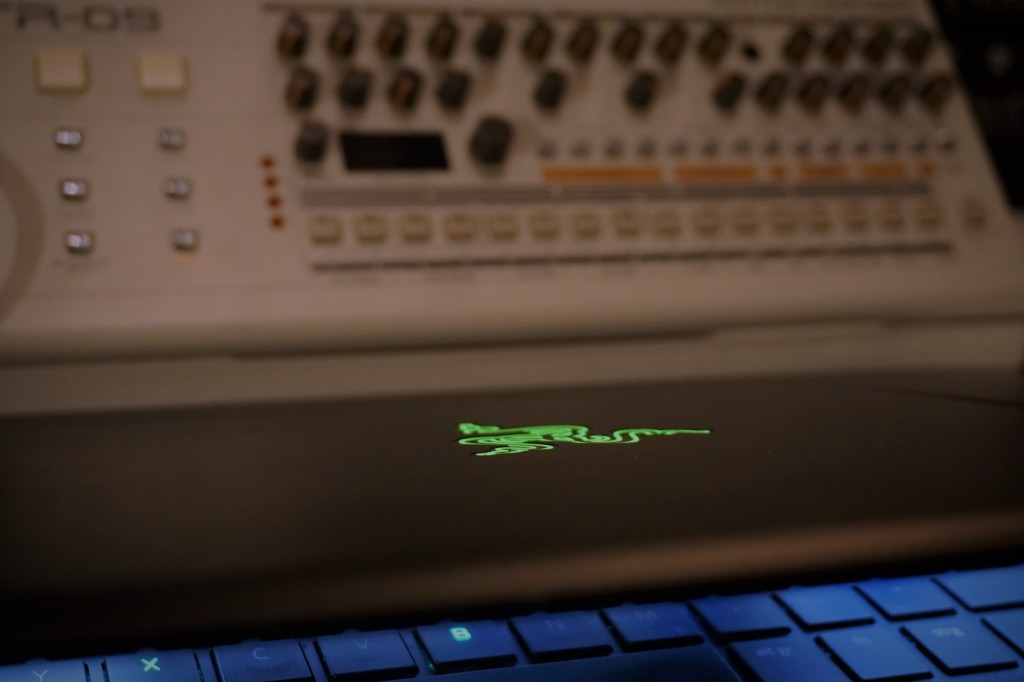Not just for gamers any more: Razer’s high-spec Blade laptop holds promise for music making, too. I’ve taken one for an extended test to see how it holds up.
Do you know what you want in a production laptop? Well, odds are, yes, you absolutely do. But as computing has pushed harder into mobility, we’ve often had to sacrifice power, specifications, and expandability we want. That is, we’ve been told what we want, rather than being heard.
The thing is, what a laptop consumer wants isn’t necessarily what we want for music, video, and the like. If you’re like me, you want a powerful machine to tote between home, studio, office, and tour spots. But it might be okay to plug that machine into power most of the time – and a little extra thickness isn’t such a big deal.
The Razer Blade is a feeling of relief – getting what you actually want for music and visuals. And that may say something about where the creative PC lies at the moment – if it was overlapping with mainstream issues for a while, it’s again a niche.
On the surface and in the marketing, this is a gaming machine. But the same specs gamers want – yes, even including the GPU (more on that in a bit) – can be just as useful to music and visual production. Razer are also the first from the PC gaming industry to figure that out, as they’ve touted the machine with their Razer Music program and even bundled a full license for FL Studio (commonly known as “Fruity Loops”).
I’ve been testing my Blade since earlier this year. It’s a machine that’s both faster and cheaper than a MacBook Pro flagship – no dongles required. (I had a MacBook Pro on loan for a portion of the same time period – and, while it was also an exceptional high-end machine, sorry, Apple, I kept coming back to the speedy Razer with its more conventional keyboard action and additional ports.) Having it over that time has let me see what it’s like in the studio and on the road for extended periods. Gamers can vouch for its quality in that territory. So let’s see if it holds up to creative use.

Black, understated, this looks kind of like you’d imagine a pro machine to look – and has elicited surprise from everyone who’s seen me with it.
Form factor, display
The nicest thing about the Razer’s design is, you’re not going to notice it much. It’s just an all matte-black design that nicely slips into the background as you work. There’s one Razer touch – the neon-green “snake” logo on the back. That logo will earn tons of compliments from gamers (turns out more of my musician friends game than I thought) – and everyone else will think it looks like an energy drink logo or that you’re going to start making trance. But there’s nothing anywhere to distract you from working.
I’m not going to pull any punches: if you miss the old pro Apple designs, you’re going to crack a smile the moment you pick up the Razer Blade. The scaling and feel seem like a MacBook Pro from a couple of generations ago. (There are even faint ribs on the top cover reminiscent of the PowerBook G3 Series, for added nostalgia.)

The keyboard features a comfortable travel and holds up to my thousands upon thousands of daily words typed. And it has interactive lighting features, all fully user-configurable.
To me, the best feature of the form factor is the keyboard. It’s crisp and has a full-sized action. In fact, when this machine was next to Apple’s offering, it was the keyboard that constantly had me switching back to the Razer above all. The trackpad is also really solid – I have mine set just for scrolling gestures and nothing else, but that’s fine.
Razer likes to advertise the Chroma support on this keyboard, which changes color based on context. There’s a C++-based SDK, and if I ever have any spare time, I’d love to write a little MIDI plugin for that or do some animations to sound for live sets.
More likely, you’ll use Chroma one of two ways. There’s dedicated support in Image-Line’s FL Studio for Razer Chroma, which provides a bunch of nifty features, depending on mode:
- You get visual feedback on audio material playing in FL, either by frequency spectrum or peak level – effectively turning your keyboard into a reactive meter.
- There’s a metronome, with both pulse feedback (on supported devices) and per-beat lighting on the keyboard.
- For using the keyboard as a melodic input, lighting will illuminate to show you where piano keys are located.
Chroma support is available as a plug-in for visual feedback, or activates for piano input when you use FL’s Typing to piano keyboard.
There’s an update coming for other Chroma peripherals, too.
This is all an interesting gimmick, but of more universal appeal, you’ll find settings in the included Razer Synapse utility that let you tone down the color or choose when and how to light keys. I like the “reactive” mode onstage – keys light when you need to see them, but otherwise disappear into blackness. And blackness is good.

Slim-ish, but not so slim as to sacrifice a complete complement of ports or comfy keyboard. And that matte display avoids glare – plus check those viewing angles.
Oh yeah – everything is black, everything is matte. That’s really what I want, as I’m either focusing on the display or trying to make my laptop disappear into the background as part of a live rig.
That includes a full HD (1080) matte IPS display, which I find is easier to use in almost every situation than a glossy display. It’s great for mobile use and terrific onstage, thanks to the matte surface reducing glare and particularly broad viewing angle. There’s no practical angle from which viewing is difficult. It’s crisp and clear, though you may find some laptops with greater color depth and accuracy and more brightness; basically, I prefer an external monitor for intensive work when I need color precision for graphics and more real estate and brightness. On the road, this display did the trick.
I didn’t get to test the higher-density Razer, which is 4K (with touch). If you’re thinking of that one, note that Windows’ scaling at high densities isn’t as consistent across applications as on macOS, either (a Windows gripe, not a Razer gripe), though that’s gradually changing. Ableton Live 10 beta for instance just unveiled features for managing higher densities.
So the display is fine, but doesn’t feel like a key feature here. For extended use, I’d connect an external display, anyway. I could imagine the touch model could be useful live, too, though I just use an iPad Pro connected to the Razer so I can move the touchscreen over by my other gear.
I/O

No adapters needed. (Onboard audio is also plenty loud.)
Now to the good bits. You get a pretty ample set of connectivity on the Razer Blade. You get three full USB 3.0 ports, and one USB-C port that doubles as Thunderbolt 3. So you have Thunderbolt for high-end audio interfaces like the Universal Audio Apollo line, and three USB ports you can use without adapters. That’s about perfect. There’s also dedicated HDMI output which can drive 4K. (This is the killer machine for live visuals – more on that below.)
Bluetooth and WiFi are also up to the latest specs.
CPU, storage, and audio

Blazingly fast CPU, memory, and storage – before even getting to the GPU.
When you think gaming machine, you probably think fast GPU – but the Razer is worth eying even just for the CPU. This model comes with an Intel i7-7700HQ quad chip, so 3.8GHz in turbo mode. My most intensive soft synths were no match for that horsepower. This becomes especially nice when getting lavish with Reaktor Blocks modular setups and huge live rigs; I was finally able to create the virtual modular of my dreams without making the CPU sputter here and there.
You’re also decked out on RAM, with 16 GB of DDR4 memory.
Storage is configurable, with up to 1TB SSD storage – yeah, that’s a terabyte of SSD, not a choice between getting an SSD and having enough space.
Sure, I use external storage, but it sure is nice not to have to depend on it for big DJ track collections alongside massive audio and video projects.
The sweet spot for me is, you can max out this machine for US$2,499.99 with the full 1 TB drive, or go for the nicer display for US$2,799.99. (Prices start at US$1899, or you may also consider the lower-priced Stealth – see bottom of article. There’s also a sale on this month, and refurbs do become available now and then.)
That’s a premium price, but the trick is, you don’t get astronomical by maxing out the specs the way you do with flagship offerings like the MacBook Pro or Microsoft Surface Book. You get a balanced machine that has all the storage, memory, and CPU you could want right now, and without sacrificing the I/O you need, too.
GPU, video, and creative applications

The 1060 delivers exceptional DirectX and (here, in Isadora) OpenGL performance, and it’s compatible with VR (and AI tools, if you’re interested). Using the GPU is when you’ll hear the fan kick in, though – but since you’re probably not mixing pushing the graphics envelope with vocal recording, that’s okay.
Of course, what puts this over the top is going to be the GPU.
That’s where this category has really transformed recently, because you now get what is essentially a high-end desktop GPU in a laptop. It’s the NVIDIA GeForce GTX 1060 VR with 6 GB RAM. That’s not available on the Apple side, and there’s reason to want it. This is a GPU that can do all this fancy experimental machine learning stuff. It can do high-end virtual reality. And it’s got way more power than you could ever use right now for live visuals.
I’ve been playing with Unreal Game Engine as a custom visual development environment for live performance. I tested more conventional tools like Isadora and Resolume Arena, and they were able to run tons of advanced shaders easily.
This matters for music, too, because you can off-load visuals (even 3D ones) to the GPU and run your music setup alongside. Even if internal graphics pull off what you need, shared memory on internal graphics means you’re limited by available memory resources.
Since it comes from NVIDIA, shader compatibility for the 1060 is excellent, and you get support for the CUDA instruction set (think acceleration for everything from graphics to machine learning). For one, this hardware is an excellent pairing for Adobe Creative Suite. Running on the graphics card, I was able to quickly render and transcode big video projects in a matter of minutes. Now, Apple can tout their acceleration for Final Cut Pro X, but … the dedicated GPU here easily keeps up in real-world applications, and the number of editors I know even on the Mac who prefer Premiere and After Effects to Final Cut Pro and Motion these days is considerable.
Using the GPU is the one time this machine is loud. Put the graphics under load, and that fan kicks in. Then again, I don’t think you’re going to be doing a sensitive studio recording while also using the GPU, so mostly this isn’t noticeable; the machine is quiet all the rest of the time. I don’t mind hearing the fan while my Premiere project renders.
But I think the GPU is worth watching. This is what future-proofs the machine. Artists want to work with advanced visuals, creative shaders, sophisticated video processing, live visual performance, 3D, VR, and AI. Heck, just one commission or workshop working with machine learning might pay off the investment. And the 1060 is a good baseline.

Even if you don’t game or do 3D output, the GPU comes in handy in applications like exporting video from Premiere.
This is the area of Razer’s lineup naturally most likely to change in upcoming models, especially as NVIDIA are also focused on new lower-power, lower-heat versions of their desktop lineup. But I still think this generation makes a worthy investment, even if you can’t yet run the GPU and get long battery life for now. (You can switch off the GPU to conserve power on battery.)
It’s also worth saying, musicians may want to invest in gaming laptops – for various reasons, not just on-paper specs.
Apart from various creative applications, music and sound design for games is becoming a big area. And that means you’ve got a good justification to go for a gaming laptop. (Yeah, it’s a tax writeoff.) There are plenty of reviews of this laptop as a gaming laptop, and I’m no expert there. But I can at least say, gaming breaks on this thing are as fun as long hours in the studio. It’s a shame we have to do other work!
By the way – while Microsoft’s Surface laptops look interesting, it seems they suffer from insufficient power to the GPU. (See The Verge’s recent coverage.) That’s a deal-killer for me – and the price from Microsoft is steep, plus they lack Thunderbolt. The Razer I think wins handily.
Life with Windows 10
If anything is holding most users back from the PC side, it’s probably poor past experience with Windows.
Windows 10 still doesn’t exactly win any contests for UI refinement. There’s some confusing mingling of tablet features and new UIs with the desktop bits of Windows you know well. And there’s the usual digging through settings panels.
But let’s talk about what matters. Compatibility with Mac volumes is no longer a problem. (I use Paragon’s products.) I think there’s a lot to like about the Windows file Explorer, but if you don’t like it, you can easily replace it with whatever you want.
Microsoft have also fixed the biggest problem with Windows for audio. You can now rely on the stock drivers for music work without worrying about latency and glitching, thanks to years of investment in that subsystem. So skip things like ASIO4ALL and use your internal audio card in WASAPI mode, and everything’s fine. You can also easily install drivers for routing audio and MIDI between apps and different machines.

Remember when this used to be scary in Windows? Now it’s perfectly okay to use the standard driver (not just ASIO) on the internal sound card. That’s useful when you just want to plug in headphones and do some arrangement in FL or Live or Reason on a train.
Some gripes remain. Driver installation and management for USB audio and MIDI drivers can still be a bit stickier than on other OSes. As I mentioned earlier, scaling the UI is also not entirely consistent yet. But on balance, I find Windows to be easy enough to work with. (It’s also great that you can now install an Ubuntu command line, if you care about that, which I do.)
Windows also has some excellent platform exclusives, like FL Studio, or vvvv and Touch Designer for visuals (Touch Designer’s recent Mac arrival still isn’t as complete). So much of the rest of our software is now cross-platform, you’ll barely notice. I found switching from Final Cut back to Premiere why so many other people have done that, and all my daily music apps are cross-platform.
Don’t listen to people who say you need to do a bunch of hacking to make Windows work for audio; you don’t. Just choose audio interfaces with stable drivers, and you’ll be fine.
Just one gripe, Microsoft – please let us delay automatic updates without hacking the Registry. (At least Microsoft quality control has been better than Apple’s, but this is more about timing updates when they’re convenient, which is essential on a machine you use onstage. Anyway, in the meantime – do something like this.)
What’s next

I’ve used this machine for a lot. It’s been a studio machine, working with Ableton Live, Maschine, Reaktor, Pure Data, Bitwig Studio, and dabbling again in FL Studio. It’s been a live machine, both running live music (with Live and Reaktor/Reaktor Blocks and Pd), and simultaneous audiovisuals (adding visuals in Resolume and Isadora). It’s been a video machine, working in Premiere and Creative Suite. I’ve DJed with it, done productions on the road. It’s handled onstage situations and smoke machines and dirt. And it doesn’t seem to be slowing down.
I feel I haven’t even scratched the surface yet, either. (Um, apart from some literal scratches I tried to put in it – did I mention I play really underground spaces? It’s resisted that, too. Nice to have a rugged machine.)
That CPU/GPU combination plus Windows is now proving handy as I experiment with creative coding and use with machine learning / deep learning tools and Unreal Game Engine and Kinect 2. (I’m developing some new courses and a new live AV show.)
I’m really happy with the Razer Blade. I hope Razer continue to refine hardware here. It’s not hard to imagine what a next generation would look like: longer battery life, a new generation of NVIDIA graphics (which will be required to deliver on battery), and refined display would be welcome. USB-C charging would be nice.
For now, though, there’s not much reason to hold off if you’re looking to upgrade. With so many specs being this solid, I think Razer are going to be at the top of the list for anyone looking for a production machine – full stop. And talking to others in the community about recent purchases, plenty of people agree.
This is a gimmick-free, compromise-free, high-end choice. And after some years away from the PC, this is as happy as I’ve ever been on a Windows machine.
Disclosure notice: I contribute to the Razer Music program, but without any monetary compensation. I had this Razer Blade provided by Razer Europe on extended loan.
For more information:
music.razerzone.com is Razer’s music-focused site, which has tutorials and such (of interest to PC users in general, not just Razer customers)
Razer has US$400 off on select models through December 23. Products are available direct (with localized service and pricing):
razerzone.com
My model, as tested:
Razler Blade 14” – i7-6700HQ CPU @ 2.6G, 16GB RAM, 1TB SSD, NVIDIA GTX 1060 VR GPU with 6GB VRAM, 16GB (DDR4) RAM. Graphics and RAM are actually standard that way; storage is available from 256G-1TB SSD on the HD model or 512G-1TB on the 4k model. And all of this is just 4 lbs / 1.86 kg – not ultrabook light, but perfectly portable.
I think the 14” model is the most balanced choice, but you can also upgrade to a roomier 17” Razer Blade Pro (with slightly higher-end specs, too), or opt for the more compact 13” Razer Blade Stealth. (To save space, the Stealth can use an external GPU, so you have graphics power when you need it.) Details:
Razer Blade Pro 17” – Full HD model (same CPU/GPU as 14”) with 16GB RAM and 256GB SSD + 2TB HDD. RAM can be upgraded to 32GB, SSD to 2TB, HDD to 4TB by user. Also have the 4K model, with GTX 1080 GPU, overclocked i7-7820HK, 32GB RAM, RAID 0 SSD up to 2TB, and mechanical keyboard.
Razer Blade Stealth 13” – New 8th gen quad-core CPU available, 16GB RAM, QHD+ touch screen, up to 1TB, and with Gunmetal color option (no glowing green logo or green USB ports, but also no Chroma keyboard). Can be paired with Razer Core for more graphics power and connectivity.
Let me know what machines you’re using these days. And, yeah, maybe we can add each other on Steam.